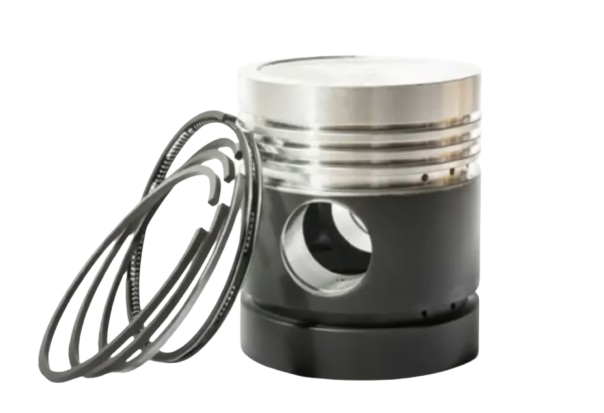
When it comes to building or upgrading a high-performance engine, pistons are among the most critical components. These small yet powerful parts play a pivotal role in the engine’s overall efficiency and power output. In the world of aftermarket engine parts, not all pistons are created equal—this disparity often stems from the materials used in their construction, which can mean the difference between a solid upgrade and a catastrophic failure.
Understanding the nuances of piston materials is essential for any performance enthusiast or professional builder. For instance, the choice between aluminum and forged steel can significantly affect not only the weight and strength of the piston but also its ability to withstand extreme temperatures and pressures. This makes material selection a key factor in ensuring that your engine performs optimally under demanding conditions.
Why Piston Material Matters
Pistons endure some of the harshest conditions inside an engine:
-
Extreme temperatures (up to 600°C)
-
High-pressure combustion cycles
-
Constant friction against cylinder walls
-
Sudden RPM changes
The wrong material will crack, warp, or wear prematurely—especially in turbocharged or high-compression engines. That’s why choosing the right piston alloy is crucial for anyone in the performance or aftermarket piston space.
Common Alloys in Aftermarket Pistons
1. Hypereutectic Aluminum (Silicon-Aluminum Alloys)
Typical Composition: ~12%–16% Silicon, rest Aluminum
Used In: Budget performance builds, OEM+ upgrades
Advantages:
-
Affordable
-
Low thermal expansion
-
Good wear resistance
Disadvantages: -
Brittle at high RPM or under detonation
-
Not ideal for forced induction
2. 4032 Forged Aluminum Alloy
Composition: ~11–13% Silicon, balance Aluminum
Used In: Street/strip engines, moderate boost or RPM
Advantages:
-
Balanced strength and thermal stability
-
Tighter piston-to-wall clearances
-
Quieter operation
Disadvantages: -
Less ductile than 2618 alloy
-
May not withstand extreme race conditions
3. 2618 Forged Aluminum Alloy
Composition: ~2% Silicon, high copper/nickel content
Used In: High-performance racing, turbocharged & supercharged builds
Advantages:
-
Exceptional strength and ductility
-
Survives high boost and detonation
-
Trusted in motorsports applications
Disadvantages: -
Higher expansion rates (needs loose piston-to-wall clearance)
-
Louder piston slap on cold start
4. Steel or Billet Pistons (Specialty Use)
Used In: Top Fuel, extreme diesel engines, experimental builds
Advantages:
-
Extreme durability
-
Handles very high combustion pressure
Disadvantages: -
Heavy
-
Poor thermal conductivity
-
Expensive
Choosing the Right Alloy for Your Application
| Build Type | Recommended Alloy | Why |
|---|---|---|
| Daily Performance | Hypereutectic / 4032 | Low noise, budget-friendly |
| Street Turbo/Nitrous | 4032 or 2618 | Balance of strength and durability |
| Track / Drag Racing | 2618 | High-temp, high-load reliability |
| Diesel / Heavy Load | Steel / Billet | Survive extreme pressure |
Each alloy brings a trade-off—between strength and noise, between expansion and clearance, between price and power.
Forging vs. Casting: The Process Behind the Piston
Even with the same alloy, the manufacturing process makes a huge difference:
-
Cast pistons: Poured into molds, cheaper, less durable
-
Forged pistons: Pressed under pressure for denser grain structure, stronger and more fatigue-resistant
-
CNC billet pistons: Milled from a solid block, ultra-strong but pricey
For high-RPM or forced induction engines, forged pistons are almost always the better choice.
Global Trends in Piston Alloy Development
Leading manufacturers from Germany, Japan, and the USA are investing in:
-
Nano-structured aluminum alloys
-
Ceramic-coated pistons
-
Advanced thermal barrier coatings
-
Low-friction skirt designs
Russia, India, and China are also emerging players in aftermarket piston manufacturing, particularly for diesel and agricultural engine applications.


